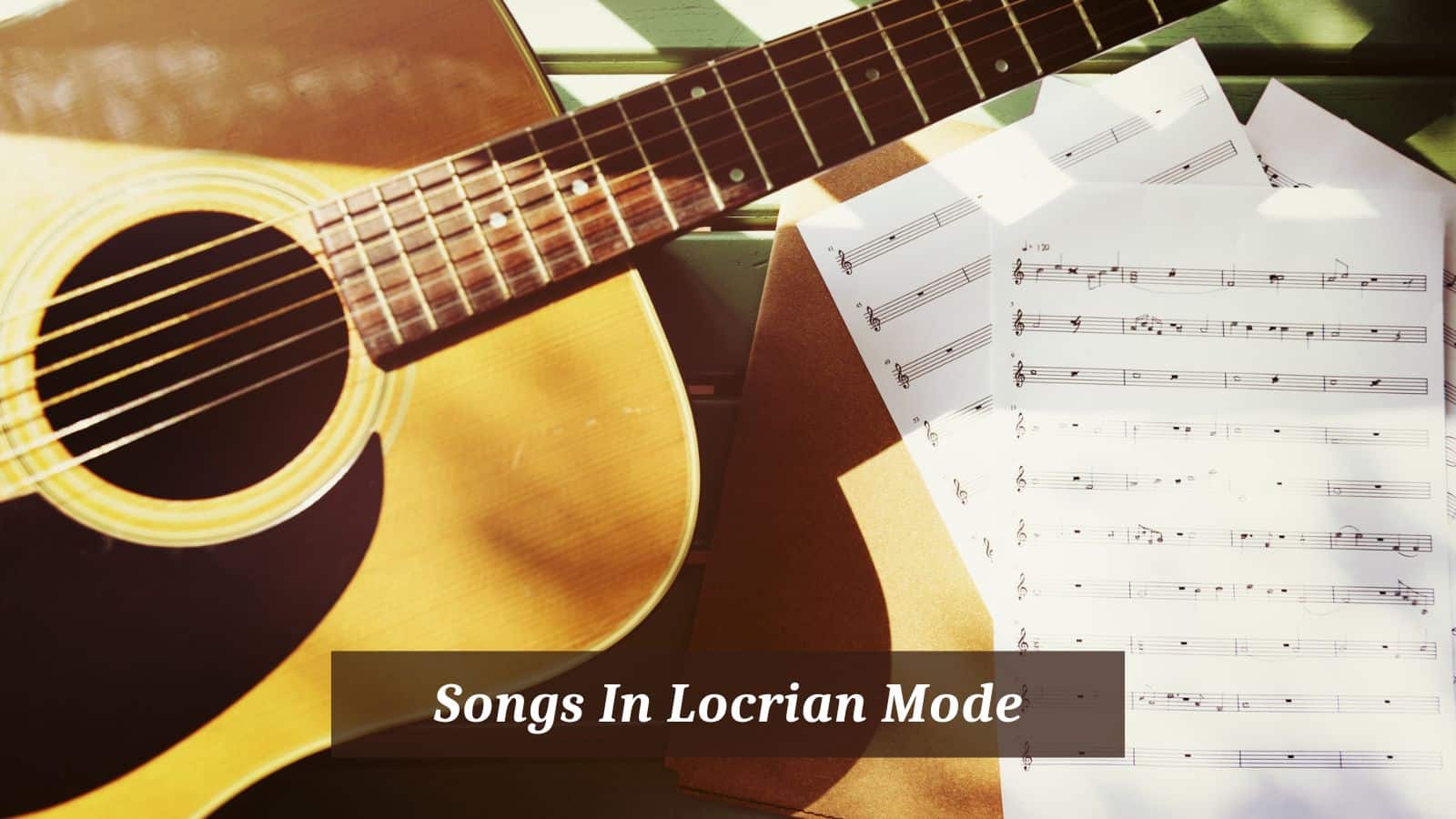
The Locrian mode is a bit of an outsider compared to the other six modes. It contains a tritone that causes a diminished chord and a diminished second. We’ll briefly examine the Locrian mode before we look at some songs that use this mode extensively.
What Is the Modern Locrian Mode?
In modern terms, the Locrian mode can be regarded as a modified minor scale with the second and fifth scale degrees lowered by a semitone (half step). This mode starts on the scale’s seventh note and has the formula: 1, ♭2, ♭3, 4, ♭5, ♭6, ♭7.
The Locrian mode is unique in the following aspects:
- It contains a diminished fifth instead of a perfect fifth, resulting in a tritone (the only other modern mode that includes a tritone is the Lydian mode)
- The second is also lowered by a semitone
- It doesn’t sound major or minor but can be classified as diminished
- This mode contains a diminished chord (starting on C: C–E♭–G♭)
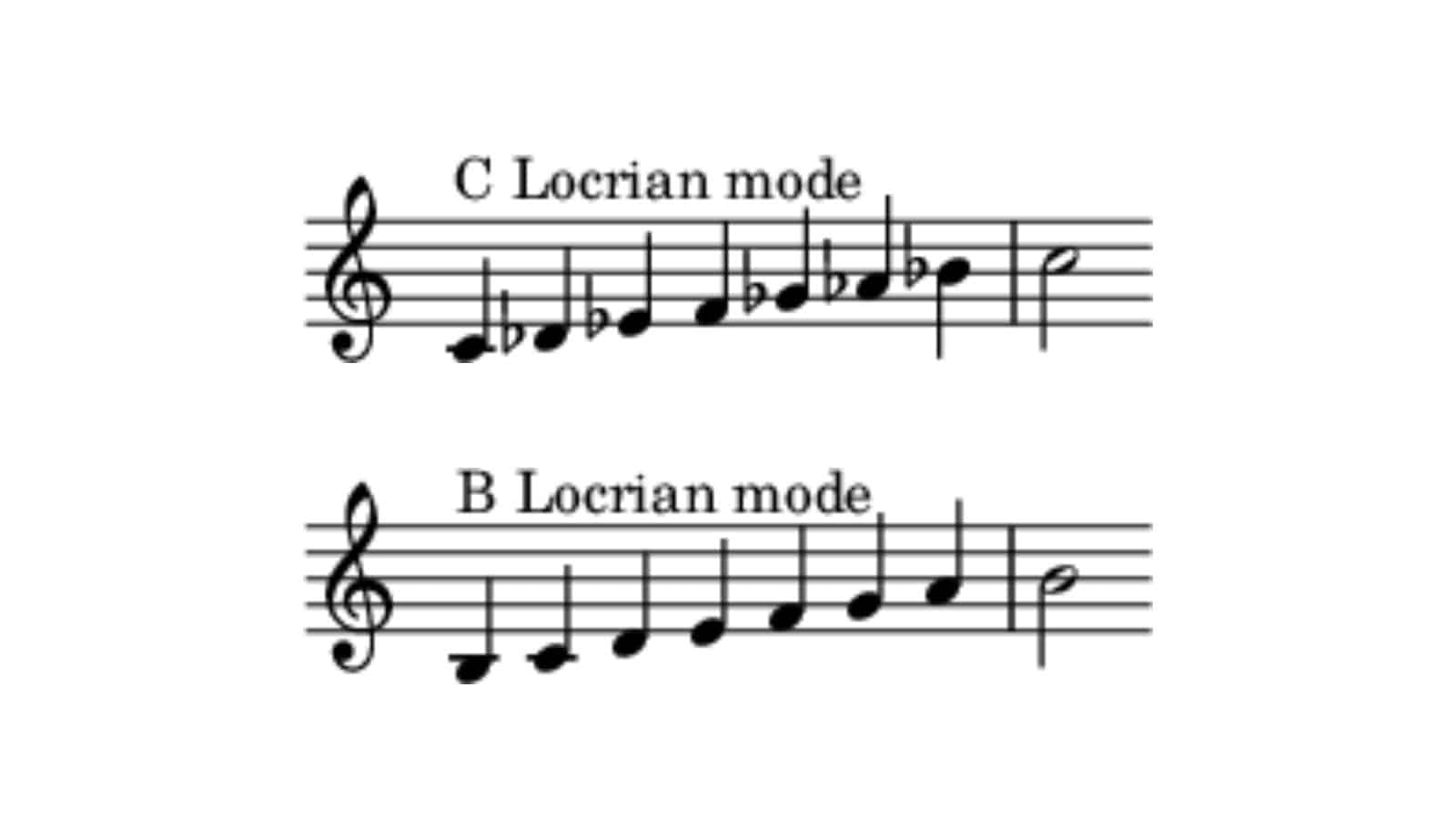
Songs In Locrian Mode
Classical and pop songs in the Locrian mode are relatively rare, but that does not mean they don’t exist. We’ll examine some songs below.
Björk’s Army of Me
Army of Me was released in 1995 on Björk’s second studio album, Post. The song opens with the repeated bass line in the Locrian mode. Although the root note is somewhat ambiguous, it will be revealed when Björk’s vocals enter.
You’ll notice the repetitive bass line (also called a vamp); it cleverly avoids the second (D♭) and third (E♭), which would help us identify it as the Locrian mode; it does, however, contain the flattened fifth (G♭).
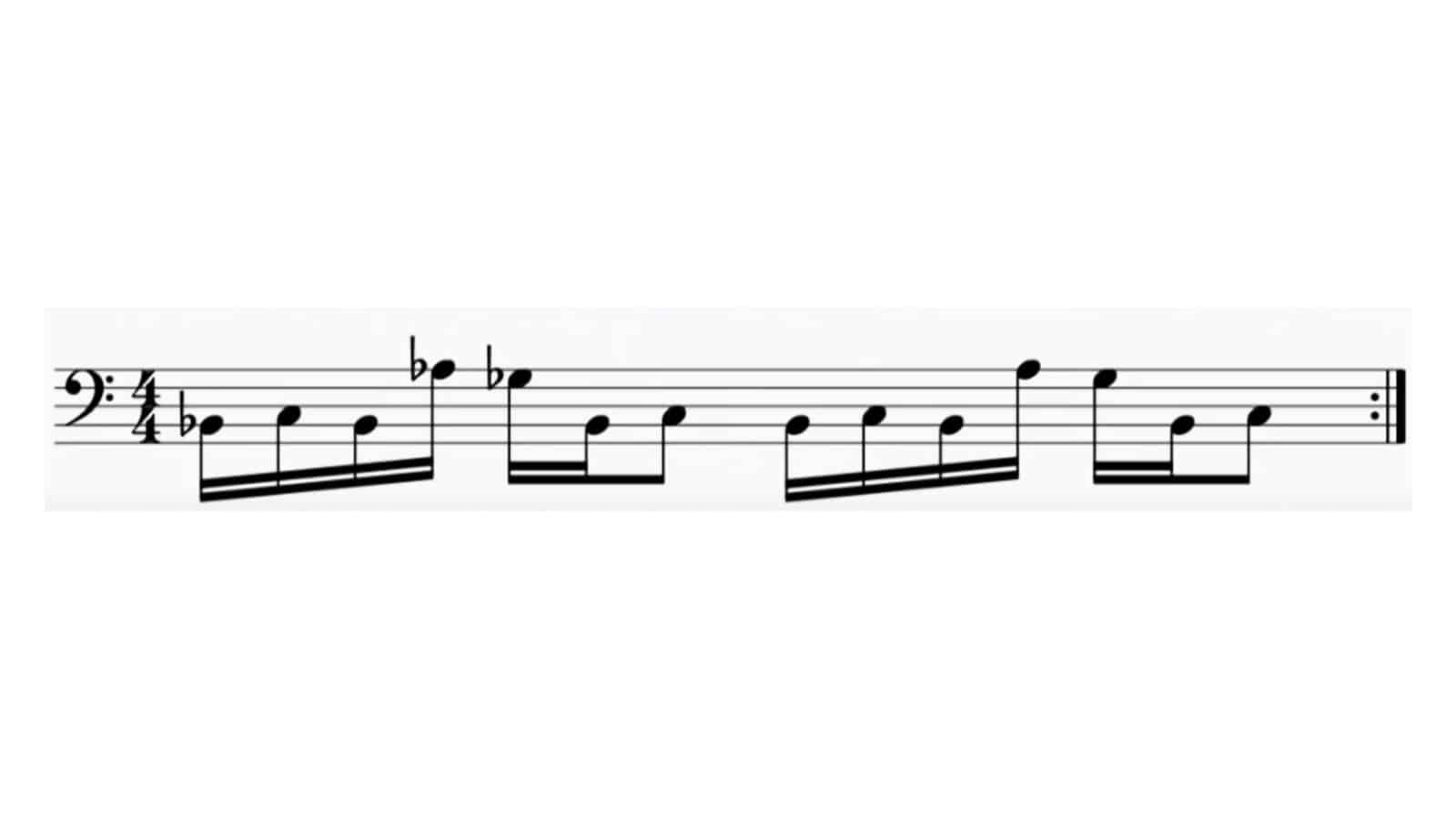
When Björk’s vocals enter (see figure 3 below), it does so on the root note, C. Also, we finally have the flattened second (D♭) and the flattened third (E♭), which establishes the Locrian mode.
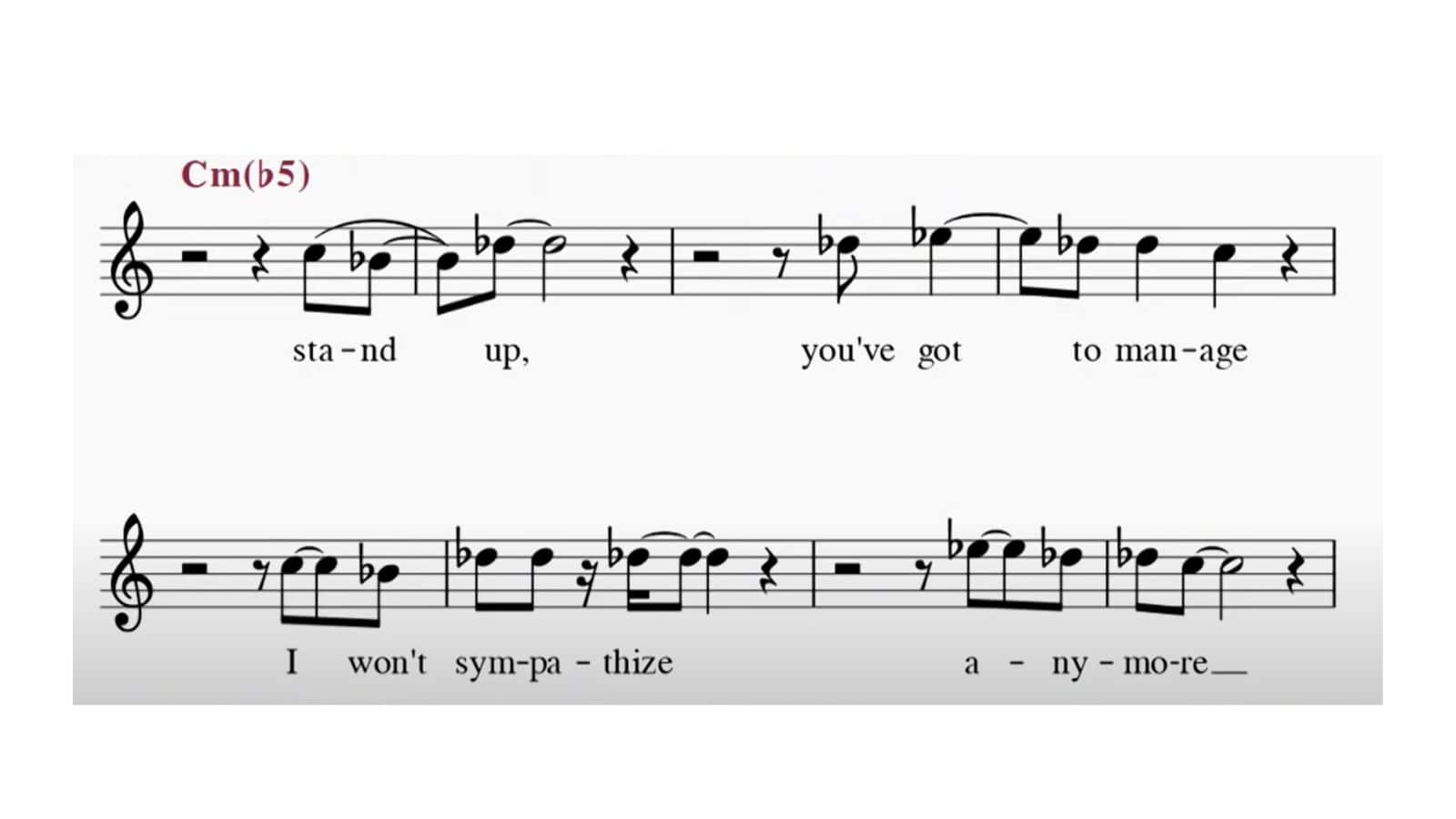
However, because the lyrics avoid the flattened fifth (G♭), we could say it uses the C Phrygian mode. This shows us a use of bimodality—both the Phrygian and Locrian modes are presented simultaneously.

Here you can watch and listen to Army of Me in its entirety.
The Strokes’ Juicebox
Again, we have a bass line vamp in the Locrian mode upon which an E minor tonality is superimposed. Unfortunately, the whole song is not in the Locrian mode

When the guitar enters (below), it combines the Locrian way and E minor tonality—the flattened fifth (B♭) is still present. Still, the diminished fifth (G♭/F♯) is no longer present. This creates a bimodal feeling over the bass’s vamp in the Locrian mode.

Finally, when the vocals enter, the diminished fifth (B♭) is no longer present, and we are firmly in the territory of E minor. However, the bass vamp is still in the Locrian mode creating a tension between the E minor scale and the Locrian mode on E.
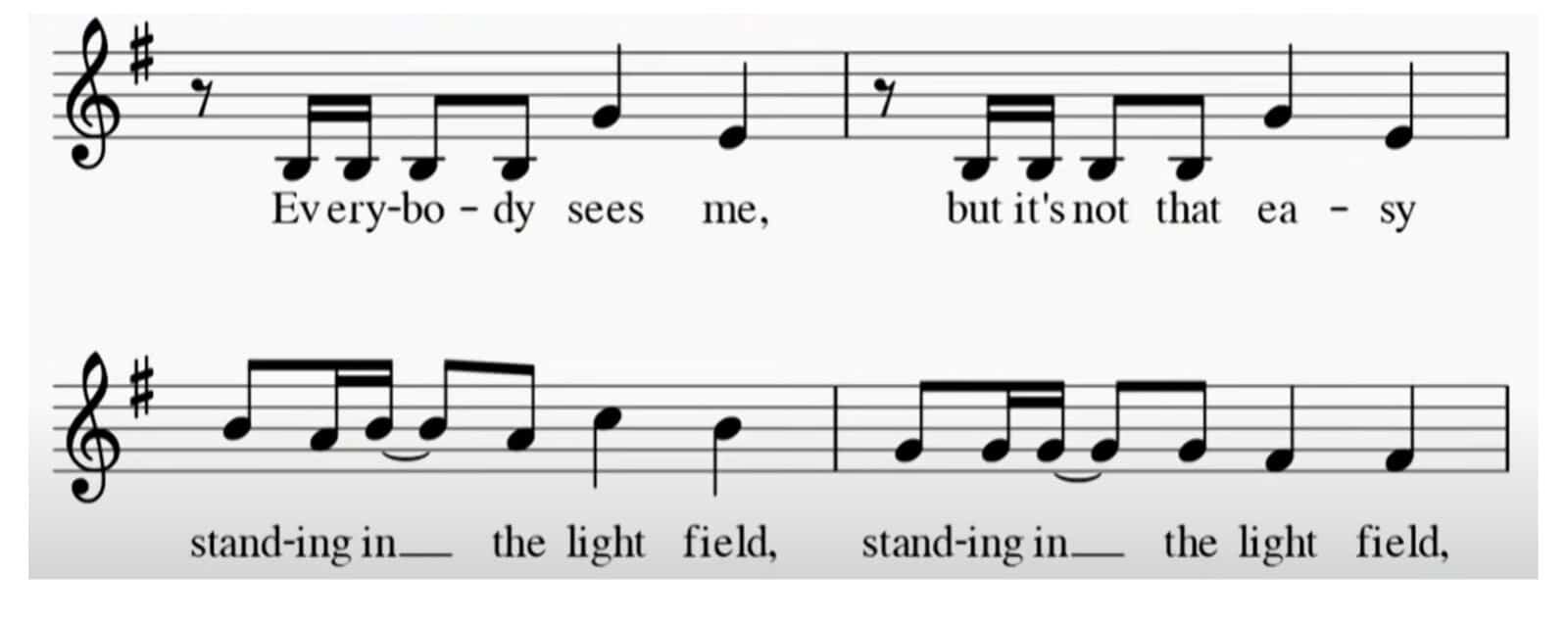
Here you can listen and watch the official music video and hear the tension between E minor and the E Locrian mode for yourself.
King Gizzard and the Lizard Wizard’s Gliese 710
The Australian band King Gizzard, and the Lizard Wizard, have never been short on ambition. Still, the narrative behind Ice, Death, Planets, Lungs, Mushrooms, and Lava departs from their previous albums.
Choosing to compose the album in the studio, the band began with seven song names, each with its own beats-per-minute value and mode of the major scale. The seventh song, Gliese 710, has a jazzy feel and uses the Locrian mode as its point of departure.
Slipknot’s Spiders
Instrumentally Spiders features the Locrian mode, mainly in the bass line and piano parts. However, the lyrics never feature the flattened fifth, making it sound like the Phrygian mode (as seen in the modes comparison in Björk’s song Army of Me — compare figure 3).
Again, this shows a clear case of bitonality in the music or even a minor scale superimposed upon the Locrian mode.
Symphony X’s Sea of Lies
Rather than exclusively using the Locrian mode, Sea of Lies uses the Locrian mode in specific passages.
John Kirkpatrick’s Dust to Dust
Finally, a song that’s entirely composed in the Locrian mode. John Kirkpatrick, an English folk artist, used the Locrian mode exclusively in his song Dust to Dust.
The eerie sound of the Locrian mode is further supported by John accompanying himself on the concertina. Kirkpatrick used the Locrian mode as a musical innovation/compositional technique because the Locrian mode never features in English folk music.
Evan Bennett’s Gnossienne No. 1 in F Locrian
Evan Bennett, an American composer, published his Gnossienne No. 1 in F Locrian on his YouTube channel in 2020. It is composed entirely in the Locrian mode on F and pays homage to Eric Satie’s Gnossienne No. 1 (written in 1899–90).
Classical Music
Examples of the Locrian mode in classical mode are scarce because they briefly use it but resolve to another mode, a new tonal center, or a new key signature.
Some examples include:
- Passages in Debussy’s Jeux,
- Rachmaninov’s Prelude in B minor, Op. 10 No. 32; and
- Jean Sibelius’ Symphony No. 4 in A minor, Op. 63.
Conclusion
As you can see, the Locrian mode is a bit strange, but that doesn’t mean it cannot be used to significant effect.
Because the tritone in the Locrian mode might be a bit more challenging to use in a song but not entirely impossible, as seen in the examples from John Kirkpatrick and Evan Bennett.
